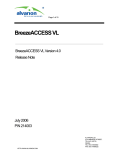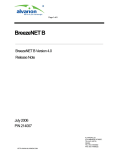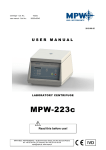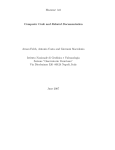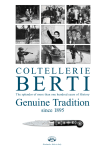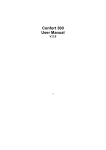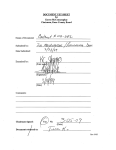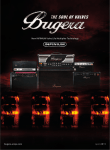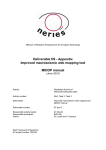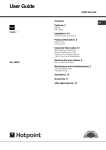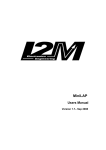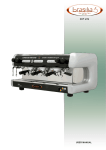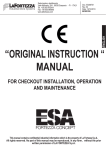Download COLTELLERIE - Home Page
Transcript
C O LT E L L E R I E BE RT I CUT AND TASTE Upstream and downstream of good cooking there is always a good knife. Every day we use many objects without knowing their intimate nature and without knowing which phenomena and undisputable physical laws determine their operation and usefulness for us .However, understanding such matters is impossible, considering the vast amount of knowledge it would require. These few pages, which make no claim to covering everything, will give you the opportunity of getting to know something more about knife making so you can use your knives better and get more satisfaction out of them. Handmade. Made in Italy. Coltellerie Berti dal 1895 Book V Verses 1240-1295 Lucretius, 1st century BC De Rerum Natura ....... Now for the rest: copper and gold and iron Discovered were, and with them silver’s weight And power of lead, when with prodigious heat The conflagrations burned the forest trees Among the mighty mountains, by a bolt Of lightning from the sky, or else because Men, warring in the woodlands, on their foes Had hurled fire to frighten and dismay, Or yet because, by goodness of the soil Invited, men desired to clear rich fields And turn the countryside to pasture-lands, Or slay the wild and thrive upon the spoils. (For hunting by pit-fall and by fire arose Before the art of hedging the covert round With net or stirring it with dogs of chase.) How so the fact, and from what cause soever The flamy heat with awful crack and roar Had there devoured to their deepest roots The forest trees and baked the earth with fire, Then from the boiling veins began to ooze O rivulets of silver and of gold, Of lead and copper too, collecting soon Into the hollow places of the ground. And when men saw the cooled lumps anon To shine with splendour-sheen upon the ground, Much taken with that lustrous smooth delight, They ‘gan to pry them out, and saw how each Had got a shape like to its earthy mould. Then would it enter their heads how these same lumps, If melted by heat, could into any form Or figure of things be run, and how, again, If hammered out, they could be nicely drawn To sharpest points or finest edge, and thus Yield to the forgers tools and give them power To chop the forest down, to hew the logs, To shave the beams and planks, besides to bore And punch and drill. And men began such work At first as much with tools of silver and gold As with the impetuous strength of the stout copper; But vainly—since their over-mastered power Would soon give way, unable to endure, Like copper, such hard labour. In those days Copper it was that was the thing of price; And gold lay useless, blunted with dull edge. Now lies the copper low, and gold hath come Unto the loftiest honours. Thus it is That rolling ages change the times of things: What erst was of a price, becomes at last A discard of no honour; whilst another Succeeds to glory, issuing from contempt, And day by day is sought for more and more, And, when ‘tis found, doth flower in men’s praise, Objects of wondrous honour Now, Memmius,how nature of iron discovered was, thou mayst. Of thine own self divine. Man’s ancient arms. Were hands, and nails and teeth, stones too and boughs—Breakage of forest trees— and flame and fire. As soon as known. Thereafter force of iron And copper discovered was; and copper’s use Was known ere iron’s, since more tractable Its nature is and its abundance more. With copper men to work the soil began, With copper to rouse the hurly waves of war, To straw the monstrous wounds, and seize away Another’s flocks and fields. For unto them, Thus armed, all things naked of defence Readily yielded. Then by slow degrees The sword of iron succeeded, and the shape Of brazen sickle into scorn was turned: With iron to cleave the soil of earth they ‘gan, And the contentions of uncertain war Were rendered equal. ....... Coltellerie Berti dal 1895 Knives from earliest times to the present day. According to the most recent theories, the first families of apes which had come down from trees and begun to take a standing posture date back to five (some say 7.5) million years ago. It was precisely this new posture, which freed the upper limbs and especially the hands from having to contribute to locomotion, which opened up the way for transforming a not yet anthropomorphous ape into a hominid. Our ancestors took several million years to specialise, making headway by trying again and again to create tools using materials easy to work and to find, such as bone and wood. Only two million years ago did they develop the skills for using stones to make tools which, thanks to their nature, have survived until the present day, providing us evidence of the existence of a great many kinds and shapes. The most ancient tools were quite simple, roughly made and used for defence or attack against animals or also against fellow human beings in order to gain control over territory. During this period, human beings acquired the ability to make tools to satisfy their needs. Tools which, though knapped on one face only, during the following half million years progressively became more precise and symmetrical, revealing skill and creativeness. Already 1.5 million years ago, items/tools existed which differed according to their use; and in the following 500.000 years, people began producing tools which were bet- ter worked and knapped, and could simplify everyday operations especially involving hunting, cutting slices of meat, making rudimentary spears able to strike animals from far away. About one million years ago, our ancestors had not only learned how to identify suitable flint for making tools, they had also learned how to shape them by striking them with another stone, knapping them until they could fit into wooden handles. Our hominid thus fashioned the first lasting handmade “object”, the first product of craftsmanship in history: the knife (it might be more accurate to say a piercing and cutting tool, but please allow me this exaggeration!). As beautiful as modern sculptures, they were also suited to the purposes for which they had been designed. The so-called age of polished stone was the first great technological revolution of all time, the first step towards the affirmation of “homo sapiens”. There followed a crescendo not only in the technique of knapping, but also in that of polishing. The latter operation was carried out by rubbing, providing the knapped stone with a sharp end or spears and arrows with pointed tips; awls and scrapers were made to work on leather, drilled axes, clubs, hand-axes. Skilful knapping, experience built up through time increasingly improved the tool – our hominid, after having discovered the best way to work, stored these procedures in his expanding brain and tried to repeat such daily actions, improving them and handing down know how to his descendants. The stone age came to an end in different times and places, due to strictly local tech- Coltellerie Berti dal 1895 nological improvements, but also to the availability of special stones such as flint (present in France and Britain) or obsidian (a fragile but hard glassy pebble of volcanic origin, to be found exclusively on the islands of Lipari, Pantelleria, Sardinia, on the Aegean island of Melos, in Anatolia, Armenia and in the Carpathians). It is curious to note that some of these simple tools were found in places where the raw material does not exist – this means that there was trade between far-away tribes. Many years would still elapse (about one million) before the discovery of metals (casting of copper, about 8000 years ago) permitted a technological leap forward in making weapons and cutting tools. With bronze (an alloy of tin and copper) first (about 5500 years ago) and then with iron (when progress in metallurgy, about 3200 years ago, made a kind of iron available which could compete with bronze), it became possible to make weapons and knives having specialised shapes according to their use, and fitted with comfortable and strong handles which ensured their prolonged use. Bronze and iron are “soft” metals, not especially suited for making weapons and knives which have to suffer blows and go on cutting as long as possible, however they continued to be used for many centuries, since it was impossible to replace them with better materials. Though cast iron, an iron-carbon alloy with a high carbon content, was already known 3000 years ago because it came “naturally” from casting iron contaminated by the carbon present in the coal used to melt the mineral, and was harder than iron, it was impossible to use because of its being so fragile and hard to work that it was called “ferraccio” or “worthless iron” in Italy. Already some 1700 (or according to some, 2200) years ago there existed in India the technique of enriching iron with carbon in a crucible to obtain the alloy known as Wootz steel, but this technique came to the West so slowly that it appeared in Europe only in the 18th century (just 300 years ago!). Until then, in Europe, the only technique known to improve the quality of “cutting iron” was to use pure iron in order to make welded Damascus steel employing cast iron with a higher carbon content: this was an extremely costly method, and did not allow for making very large pieces, at the most as large as a sword blade. This technique could therefore be used only for making “important” weapons, and not for everyday tools which continued to be made using iron with more or less carbon content on the forge, depending on the skill of the “master knife maker”. The technique for producing welded Damascus steel was mysteriously forgotten in Europe between the 5th and 16th centuries, and was discovered again during the Renaissance, when the myth spread that swords held by the Saracens in Damascus and seen by the Crusaders had marvellous properties, because they were made using welded Damascus steel. Actually, an analysis of the weapons which have survived from the battlefields of those days show that it was not so. It seems that the Wootz technique had been refined so as to absorb carbon, especially on the edges of the sword, Coltellerie Berti dal 1895 while keeping the core relatively mild. This afforded a sword which was flexible enough to stand up against blows without breaking, while providing a very sharp blade which kept a cutting edge for a long time. The difference in carbon content between the edge and the core of the sword created a pretty wavy pattern on the surface, hence the term damasqued. So we may say that techniques used to make steel for “cutting irons” were developed, introduced and sometimes lost in different places and at different times, but in Europe, steel having a good and stable quality has been available only since 1740. Since 1740, steel production has been perfected, making it possible to produce high quality steel with a controllable carbon content and which can easily be worked. The kind of steel we have been talking about so far is what is called “carbon steel”, which rusts and which, if brought to the lips, has a strongly citrous flavour, which it also passes on to food which it comes into contact with. It was only in 1913 that Harry Brearley in Sheffield discovered that a steel sample with little carbon but with an addition of 13-14 % chromium did not rust when exposed to the atmosphere: it was the first stainless steel in history. However, one has to wait until 1921 to see the first stainless steel knife, made by in the US by the International Silver Company. Actually, this new material began to be used for cutting irons, especially those used in surgery or for food consumption, only in the 1950s (just 70 years ago!), because of the difficulty of achieving a kind of steel both rustproof and capable of cutting at the same time. Even now, though very sophisticated stainless steel which can cut well does exist (but is not 100 % rustproof), many people still have an unfounded distrust of stainless steel. Of course many other materials have been added over the last century, to make “cutting irons” (titanium, special steels, sintered steels, even plastics, etc. etc.) which are very good but are meaningful only if used for special production requiring specific features. A different matter is the use of ceramic to make kitchen knife blades, the latest technological frontier in kitchen cutlery during the last 30 years. This uses zirconium oxide powder pressed at 400 Tons and sintered at 1350 °C providing a very hard blade, very hard to model but, when once made it cuts wonderfully. The main limits of such knives lie in their fragility and in the impossibility of sharpening them again when, inevitably, they lose their cut after prolonged use. Fashionable today and highly praised by those who sell them, apart from their undisputed quality, they should be used only to cut food which is not too hard and has no bones, making cuts which do not require the slightest bending or twisting of the blade. There must never be falls or blows. Coltellerie Berti dal 1895 The art, use and tradition of Italian knives. The good user of knives. Before giving specific instructions on how to choose the right knives for your needs, we can draw up seven points on basic behaviour and notions which will help you to become a “good knife user”: 6. Nearly all knives today are made of stainless steel: so you can wash them, but you must dry them off (good stainless steel still has a rich carbon content and can occasionally stain). 1. Don’t deceive yourself: no knife exists which can cut everything (and it would be sad too: imagine if there were only one kind of wine”), no knife exists which can do without sharpening, no knife exists which is indestructible. 7. If you don’t want to do without using a washing machine, at least place them in such a way that they do not strike against each other or against other items which could compromise their sharpness during washing; and dry them by hand when the wash finishes. 2. To cut pleasantly and get good results, you must know your knives and what use they were designed for. Upstream and downstream from a good kitchen there is always an excellent knife and its proper use. 3. A knife must never be used for wrong purposes (screwdriver, can opener, cutting deep frozen products or breaking bones, etc.) as this is the surest way to ruin the knife and hurt yourself. 4. Keeping knives perfectly sharp makes them less dangerous (no need to force a cut dangerously). 5. Use them on firm surfaces and always put them away in safe places, never throwing them in with all the other kitchen accessories. Knives too come in categories. Knives have been with us since the dawn of civilisation and perhaps the naturalness with which we live with them leads us to underestimate them, forgetting to try to understand how to use them really, or the specific uses of the various kinds which manufacturers offer us. On the other hand, it is true that knives are hardly ever sold with a user manual, as though manufacturers took it for granted that everybody knows how to use them properly. Nothing could be farther from the truth. Many people, of every social class, use a single knife to do everything in the kitchen, they do not care about what they use to cut with at the table, and they inevitably end up by complaining about the poor results they get when cutting. Actually, every good cut begins with the choice of the right knife. Without claiming to be exhaustive and being aware that we are neglecting many issues, in order to put you in a condition to choose the knives you need, in a simple way but knowing what you are doing, we can start by distinguishing the main features of Table and Kitchen knives. Coltellerie Berti dal 1895 Making knives with a saw blade for Table and Kitchen use is a relatively recent custom. Saw blades have become widespread only because they are cheaper, being made in great quantity with totally automatic processes. When cutting food, one can see that a smooth edge is more pleasant and cleaner when cutting, though this means it will be more costly to buy and maybe need to be sharpened a little more often. It may seem a bit intellectual to feel uncomfortable when using one’s teeth to rip the food we are going to eat on the plate, submitting it to a further useless sacrifice (before it came to our dish, it was an animal or a vegetable which sacrificed its life to nourish us); but it is surely more immediate to note that when we cut meat, vegetables and cheese using serrated knives, fluids come out which contain a major part of the flavour and nourishment which instead of being eaten, will stay in the dish. In the kitchen, once we know that a saw blade knife is needed to cut bread, we must distinguish smooth bladed knives according to their body and the geometry of their edge (the final cutting part of the blade): Wedge shaped body and convex edge: this is the most ancient and common shape for a blade and its edge, but it is also the most versatile. Knives with this kind of edge ensure long lasting cut and easy sharpening. They are suited for cutting raw and cooked meat, fish, cheese and vegetables This kind of sharpening can be done only by hand. Rectangular body and double wedge edge: this is the feature of knives which are not very flexible but are strong and are suited to withstand the blows typically incurred by bone breakers. Wedge shaped body and simple wedge edge: this is the feature of knives which cut very sharply and are flexible. The limits of such blades are that the cut is short lasting and they are fragile, making them suited for cutting (filleting) fish and vegetables (food without a strong body, where cutting must be made in a very delicate manner in order to preserve structure and taste). Serrated blade: purchase these only to cut bread or any other dry-fibre oven product. They are not suitable for any other kind of cut, since the saw blade tends to break fibres and let fluids out from the food we are going to cook or eat, leading to a loss of flavour and nourishing substances. Serration also has the unpleasant effect of leaving ugly “claw marks” on what it cuts. Smooth blade: the only kind suited to cut meat, fish, 1.Wedgeshaped body and convex edge. vegetables, fruit and cheese. A smooth-bladed knife cuts softly, with the greatest respect for what is supposed to nourish us, preserving every touch of flavour and nourishing capacity. 2. Rectangular body and double wedge edge. 3. Wedge shaped body and simple wedge edge Coltellerie Berti dal 1895 We suggest you don’t let yourself be amazed by special effects, purchasing knives with original and “strange” blades and edges. If you really want to enjoy the satisfaction of purchasing a knife which is guaranteed to be just right for a specific use, do it only after you have bought the full set of knives which are indispensable for your kitchen: this way, you can be sure to make good cuts. The surfaces of the blades give a nice appearance to the knife, and choosing sober and effective working ensures the results will be good. Therefore, you can choose knives among those which have the following kinds of blade surfaces: using the point, and one wants to get slices by sliding forward. Or else in the case of cheese which is cut only by pressing and not by sliding. Or for certain ways of cutting vegetables and fruit. Handle: this decides how comfortable the cut will be, so it must fill your hand well, and allow you to grasp it an easy and sure way, so the knife will never slip from your hands. In the case of handles, too, sober shapes are a synonym of functional efficiency, if we are looking for beauty, it is better to choose nice looking materials (horn, wood, special plastic) rather than look for “amazing” shapes. Thickness of the blade: knives must be as thick as Satin finish: these are the most common today, due necessary for what they are cutting. For kitchen use, to the need to simplify the manufacturing process. They were also successful because their surface aging is less than those of mirror polished blades. It makes it harder for cut food to stick to the blade Mirror polished blades: these look very beautiful, they increase rustproofing, but they are easily scratched when they touch each other and during cutting. During cutting, food tends to stick to the blade causing unpleasant and sometimes dangerous deformations on what you are cutting. thin blades will cut and penetrate better, but will be delicate, so they must be used for food (fish and vegetables) which have easily cut fibres and which could be damaged by rougher cuts. Medium thick blades will be used for meat and thick ones to break bones. Size: don’t be afraid to buy “big” knives, it is a good rule to use a knife twice as long as what you want to cut. Forged blades: these are the most prestigious and beautiful. Obtained by forging – today using a mallet, Point: It may seem strange, but knife points exist not by hand – they once ensured better cutting quality basically “because a blade has to finish somewhere”, only in some cases does it have to do with some specific task, it usually simply sets the appearance, the style of the knife. In this case too, I would distrust esoteric looking tips and for my kitchen, I would choose among the following: Centred point: ideal for paring knives used to prepare meat and have specific functions which call for piercing. They are also ideal for carving knives. Scimitar point with straight spine: the ideal for cutting large slices of raw or cooked meat, when one needs to slide forward while cutting and entering, helping oneself with the point. Round or square point: the ideal for raw or cooked meat knives where one does not have to enter first since forging gave a uniform and fine grain which improved the cutting capacity and duration of the knife. Mallet blows break up and give order to the steel molecules. Be careful when choosing such knives: “fake” ones exist, stamped with a fake knot added only for reasons of appearance. Generally, forged knives are more expensive. Coltellerie Berti dal 1895 Stamped or laser cut: originally designed to save money and make for easier production, they were once thought to be of poor quality, however today they have acquired a different esteem, since technological progress has made it possible to use steel alloys to make stamped knives which give a very high blade quality (fine and orderly granulometry without forging). It is in any case hard to choose a knife of the right quality among stamped ones – we suggest you refer to a reliable dealer. The fact that it is easier to make knives this way has led to a wide range of productions: unhardened blades, pre-hardened, pre-conified etc. , the quality of which is very dubious. Material of the blade: the most widely used is stainless steel, which came massively into use over 50 years ago to solve the problem of rusting and the citrous flavour left on food by old carbon knives. To get the right cutting capacity and make sharpness last, you should choose stainless steel knives with a high percentage of carbon (more than 0.50%) however the higher the percentage of carbon, the less rustproof it will be. Don’t trust 100% rustproof knives, because their steel will not be suitable for cutting. The surface may be either mirror polished or satin finished: mirror polish is prettier when new but it ages quicker, whereas satin finish preserves its initial appearance longer and prevents cut material from sticking to the blade. Recently, knives have appeared with ceramic blades which finally solve the problem of oxidation and ensure long lasting sharpness, but are fragile and when they will inevitably cease to cut, they will be hard to sharpen. Material of the handle: natural materials (horn or wood) are pretty and nice to touch, but inevitably they age quickly, require care when being used and make it necessary to wash them delicately and by hand. Many qualities of plastic – widely used today – exist. They are nearly always polycarbonates, cheap and strong, but which age quickly and only come in opaque and dark colours. Polymethyl acrylate is less used, because it costs more and is harder to work on, but it provides lively and brilliant colour with a nice glossy appearance which lasts a long a time and stands up well to washing. A plastic handle makes washing by hand easier, but also using a washing machine; however, if you want to keep the blade of your knife both efficient and pretty for a long time, it is always better to wash by hand. Coltellerie Berti dal 1895 Instructions To get the best out of your knives. Using a knife of quality is essential for the best cuts, but it’s also important to follow some simple instructions. Low quality knives are best-suited to withstanding poor cutting techniques and lack of maintenance. Every knife should be used for the purpose it was intended for. The shape, the thickness and the steel the knife is made of, make them unsuitable for using as levers: never try to pry open jars or remove crown stoppers, or put a sideways force on a knife to try and “break apart” what you’re cutting: you can’t cut a whole mature cheese with a paring knife! There are short-bladed knives with suitably dimensioned handles, designed for this sort of thing. A knife can only be used to cut food by sliding the blade across it while applying pressure from above. If you find yourselves using “force” to cut, you’re using the knife in the wrong way, and may end up breaking it or even hurting yourselves. Don’t “throw” your knives in a drawer with a thousand other things if you want to keep them in good shape and as sharp as they should be. There are special drawers designed for knives, but if you don’t have one get a “Block”. Washing the knife by hand after use and drying it carefully after washing are the secrets to keeping your knives in top form for a long time: use warm water (40°C), a non-aggressive detergent, and dry the knife imm ediately after washing it. If you don’t wash a knife after using it, leaving food residues on the blade until the next day, you may be in for an unpleasant surprise and find unsightly reddish stains and black marks on it which, while not exactly rust, are nonetheless still produced by carbides forming on the surface. Coltellerie Berti dal 1895 Never leave your knives to drip dry after washing: this is one sure way to stain them with marks over some or most of the surface. These marks may be caused by contamination during the wash or in the worst cases by an actual attack on the steel. Water with a high iron content leaves deposits. Knives that don’t have natural handles can also be washed in the dishwasher, taking care to position them so they can’t knock against each other and using a short/delicate wash cycle (max 60 ° C - 140 °F), but you should also bear in mind the possible consequences: dishwashing makes the objects washed in the machine age quickly, the higher the quality of a steel blade - the less stainless the steel will be, so the blade can become stained with small reddish or large bluish marks. Always dry your knives by hand because dishwasher’s drying creates an environment saturated with aggressive vapours which, in some cases, can produce stains. These may be caused by contamination during the wash, or in the worst cases by an actual attack on the steel itself. A good quality blade will never be completely stainless (to cut well a blade must have a high carbon content rather than chromium) so if a quality blade comes into contact with substances such as acetic acid, hydrogen sulphide and citric acid found in many foods (fruit, vegetables and meat) the steel may reach its limits of resistance to aggressive environments. Inexpensive knives are not affected this way because they contain very little or no carbon: but they can’t cut properly and can’t be sharpened! It’s your choice! In rare cases the oxidation of a knife blade is caused by low quality steel or an incorrect tempering process. This type of oxidation is easy to recognise as it actually eats away at the steel instead of just leaving surface stains. Handmade. Made in Italy. Coltellerie Berti dal 1895 Knife which has been forced too much by twisting or bending Blade broken because it was forced by using it as a lever A hammer was used on the back to cut something (perhaps bone) Fallen knife Maintenance Service An after-sales service just for purchasers of Berti knives. If you feel the need to sharpen your Berti knives after prolonged use, or if you have managed to get them into one of the states shown in the pictures above, don’t worry! You can contact the exclusive maintenance service Coltellerie Berti offers its customers: if you ship us your Berti knives, they will be put through accurate maintenance and sent back to you like new (of course, the broken blades will be a bit smaller as they broken part will be missing). The maintenance service is managed directly by Coltellerie Berti. The address to ship your Berti knives to is: Coltellerie Berti S.r.l. Via della Resistenza 12 50038 Scarperia (Fi) - Italy When you ship your knives to Coltellerie Berti, be careful to: • Ship using Poste Italiane, if you don’t have a contract with a professional courier. The provide excellent service at a reasonable price. • Wrap each knife one by one with newspaper or polybag, enough layers to prevent blows, falling or the knives rubbing against each other inside the package. • Protect the point of each knife with a reinforcement made of cardboard or a very thick layer of paper, so it does not break through rubbing inside the package during travel, as it could injure those who handle it. • If you don’t have a suitable container to ship in, use the cardboard boxes which you can buy at the Post office, and which have proven to be strong enough. • Don’t forget to clearly write your address, a phone number and an email. • Don’t specify delivery hours: you have to provide the address of a place where somebody will be ready to receive the package throughout office hours. However, you can exclude specific days because the office will be closed or you expect to be absent and you can also specify whether you prefer to receive the package in the morning or the afternoon. • To spread out shipping costs, send several knives at a time. Coltellerie Berti dal 1895 Knife left to drain off after washing Handle shrunk due to high temperature (over 60 °C) Blade broken because it was forced by using it as a lever Fallen knife Horn knife handle washed in a washing machine or left wet Coltellerie Berti will bill you different prices for maintenance services, depending on the length of the blade and the job you need. Current prices are: • Blade sharpening and satin finish (in short sandblasting): 3.00 euros: up to 12 cm blade (short blade) 3.50 euros: 13 cm to 18 cm blade (medium blade) 4.50 euros: 18 cm or longer blade (long blade) • Ordinary maintenance, sharpening, ground and satin finished (in short sandblasting) of the blade, taping and polishing of the handle: 8.50 euros: up to 12 cm blade (short blade) 9.50 euros: 13 cm to 18 cm blade (medium blade) 11.00 euros: 18 cm or longer blade (long blade) • Non-routine maintenance: 40.00 euros: replacing full handle (any material) 45.00 euros: replacing pocket knife handle (any material) 35.00 euros: replacing pocket knife spring 20.00 euros: replacing whole handle tang of kitchen knives (any material) 12.50 euros: replacing whole handle tang of table knives (any material) 15.00 euros: replacing broken or blunted blades or which are missing some pieces, etc. • Cost for shipping back to you after Maintenance: 10.00 euros: shipping back inside Italy. By cost : shipping back abroad (depending on the country of destination ) Free : if you have your own courier • Payment exclusively: • Cash on delivery to courier (within Italy only). • Advance payment: Money transfer by PayPal to: [email protected] By bank transfer to: Banca del Mugello Credito Cooperativo Ag. Scarperia IBAN: IT 81 L 08325 38090 000 000 0 62582 BIC: ICRAIT 3F910 Purchasing the sharpening or maintenance service on the website: www.emporioberti.it in the Service – Maintenance area Mozzetta - David Berti 1935 Coltellerie Berti S.r.l.- Via della Resistenza 12 - 50038 Scarperia - (Firenze) - Italia Tel. (+39) 055.84.69.903 - Fax: (+39) 055.84.68.014 - e-mail: [email protected] web: www.coltellerieberti.it














